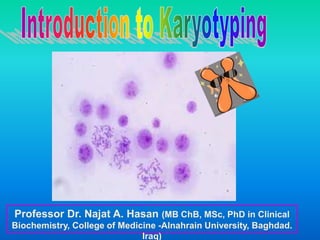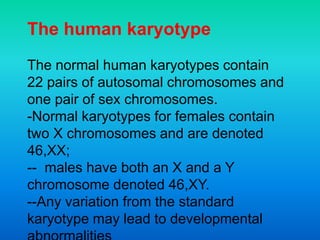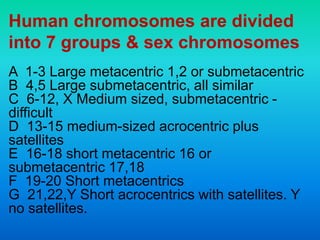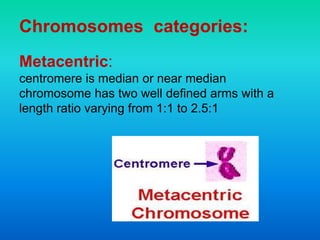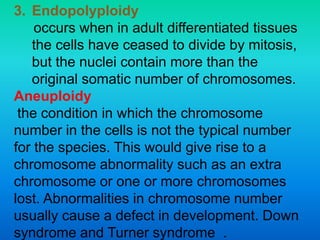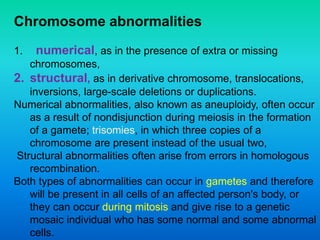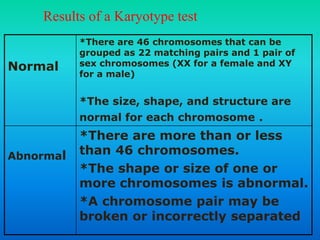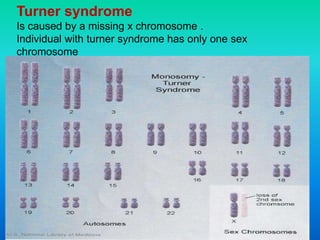Karyotyping involves analyzing chromosomes to identify abnormalities. A normal human karyotype contains 23 chromosome pairs, including 22 autosomal and 1 sex chromosome pair. Karyotypes arrange chromosomes by size and centromere position. Common abnormalities include extra or missing chromosomes leading to conditions like Down syndrome, Turner syndrome, and Klinefelter syndrome. Karyotyping is used for prenatal testing through amniocentesis or chorionic villus sampling to detect chromosomal abnormalities in fetuses.
